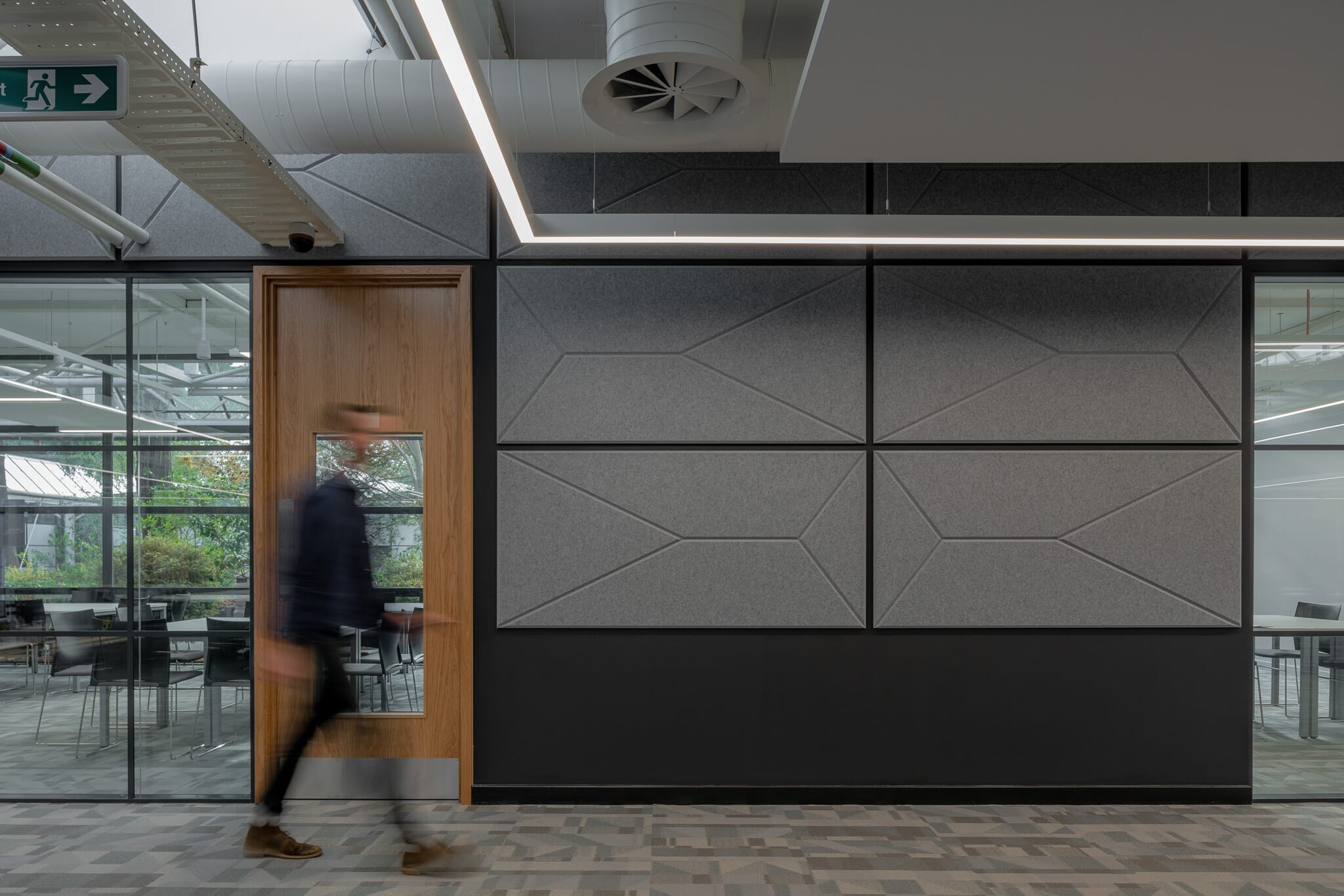
5 Minute Read
BB93 Guidelines for Acoustic Performance
BB93 guidelines set the benchmark for acoustic performance in UK schools, ensuring learning environments are designed to support clarity of speech, concentration and wellbeing.
Categories
Advice
TL;DR – Summary
A well-designed acoustic environment in schools is crucial for learning, helping students hear clearly, stay focused and reduce stress. Poor acoustics—high noise and long reverberation—impair communication and comprehension. Updated BB93 guidelines set standards for classrooms, sports halls and IT suites to ensure speech clarity and comfort. Planning acoustics early in school design is key to creating effective, supportive learning environments.
Why is the Acoustic Environment Important in Schools?
A well-designed acoustic environment is essential for effective learning. Good acoustics in classrooms help students stay focused, improve learning outcomes and reduce stress for both students and teachers. It’s no surprise that a great deal of research has been dedicated to understanding the impact of acoustics in education. Studies have shown that in severe cases, students may fail to hear up to 70% of consonants spoken by a teacher — significantly impairing communication and comprehension.
Many areas in schools, particularly classrooms, sports halls and corridors, suffer from excessive noise caused by high reverberation times (RT) — where sound lingers in a space because it is not properly absorbed. Poor acoustics create a chaotic sound environment, disrupting communication, reducing speech intelligibility and making it harder for students to hear, understand and concentrate on lessons.
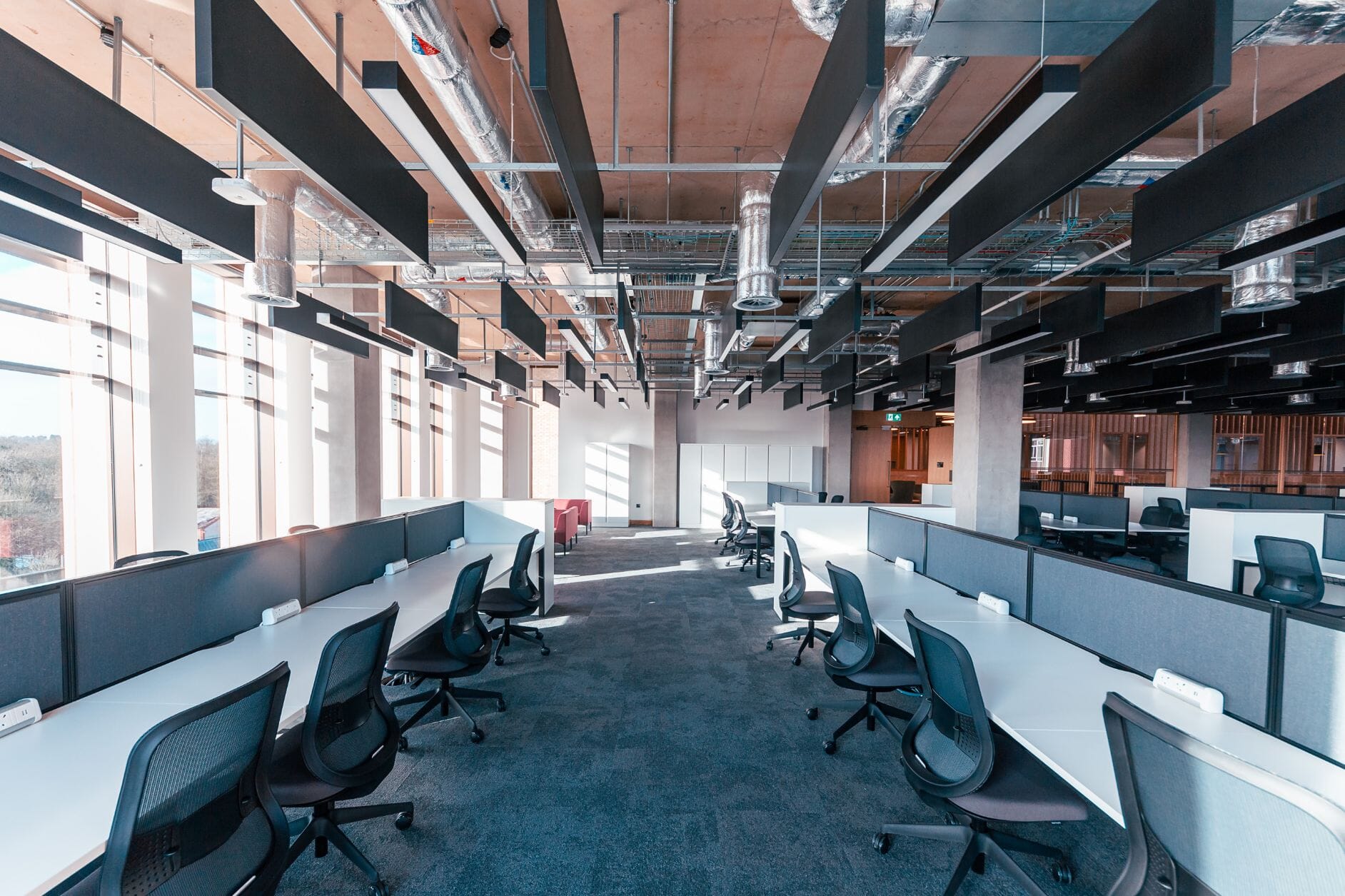

School Acoustics and BB93 Guidelines
Recognising the critical role that sound plays in educational spaces, the BB93 guidelines were first introduced in 2003, setting the benchmark for acoustic performance in UK schools. These standards aim to ensure that learning environments are designed to support speech clarity, concentration and overall well-being for both students and teachers.
However, as teaching methods have evolved, classroom layouts have changed and technology use in education has expanded, parts of the BB93 framework have become increasingly outdated. Recognising this, a comprehensive review of the guidelines has been launched to modernise the approach to acoustics in schools.
Key takeaways from the BB93 review
Relaxed reverberation times for sports halls
The required reverberation time for sports halls has been extended from 1.5 seconds to 2 seconds
New standards introduced for IT suites
Given the widespread integration of technology in learning environments, a dedicated acoustic standard has been introduced for IT suites.
Revised method for calculating building envelope effectiveness
Testing assumptions have changed from midsummer (all windows open) to mild conditions (only a few windows open), making it more achievable for schools to meet targets.
Stricter rules around Alternative Performance Standards (APS)
Spaces that have a pre-existing acoustic compromise and do not need to uphold the same acoustic standard, can no longer be applied with common issues.
Expanded provision for English as a second language student
Spaces designed for students with special hearing and communication needs now include classrooms catering to students whose first language is not English.

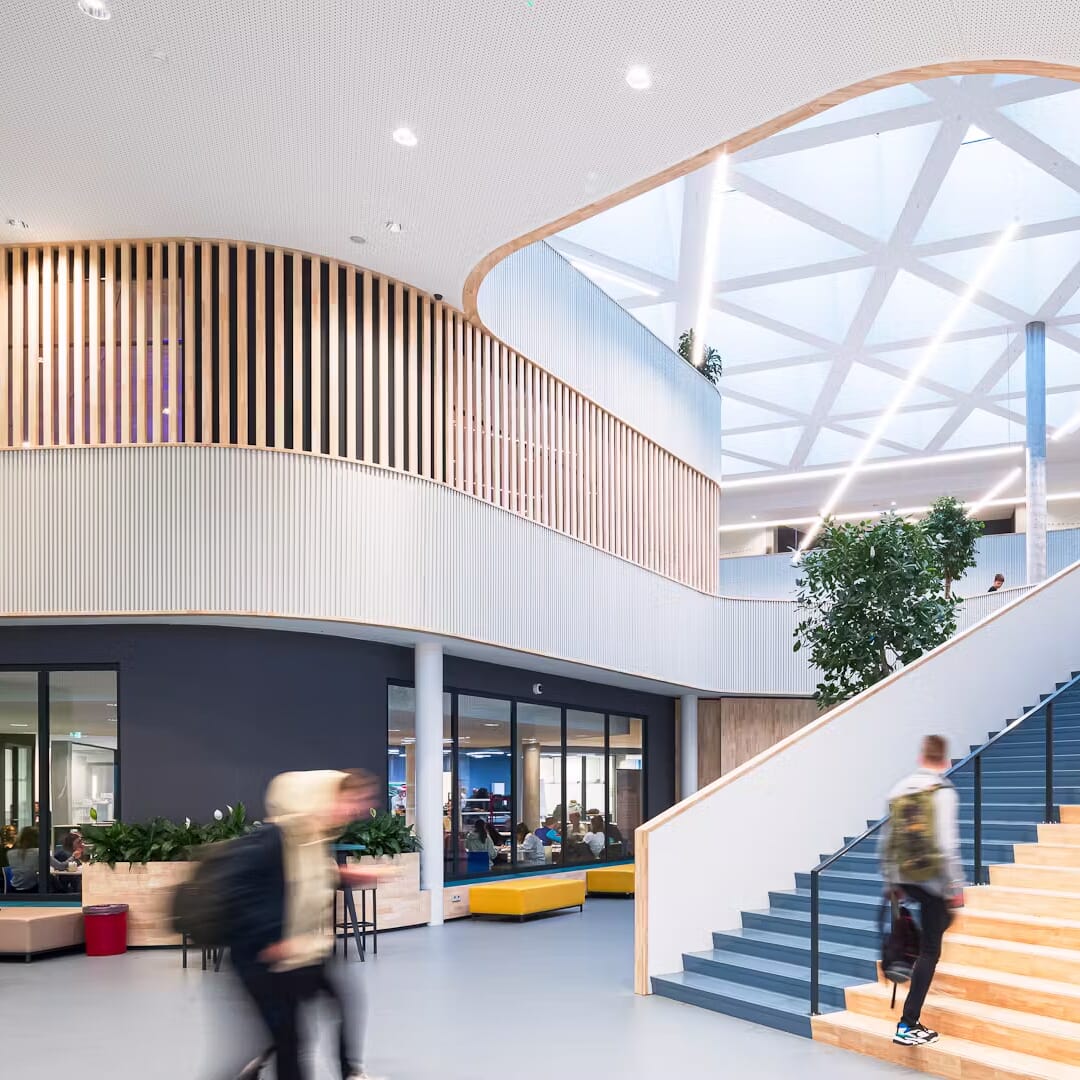
BB93 Decibel Levels
| Room | New Build (dB) | Refurbishment (dB) |
| General Teaching Areas (Classroom, Seminar Room, Small Group Room) | 35 | 40 |
| Open Plan Teaching Area, Breakout Area | 40 | 45 |
| Primary/Secondary Music Room, Performance Recital Room | 35 | 40 |
| Ensemble Room | 30 | 35 |
| Lecture Room | 35 | 40 |
| Special Hearing and Communication Teaching Spaces | 30 | 35 |
| Study Room | 40 | 45 |
| Libraries | 40 | 45 |
| Science Lab, Design and Tech Rooms | 40 | 45 |
| Drama Studio, Assembly Hall, Multi-use Hall | 35 | 40 |
| Atrium, Circulation Space | 45 | 50 |
| Sports Hall, Dance Studio | 40 | 45 |
| Swimming Pool | 50 | 55 |
| Dining Room | 45 | 50 |
BB93 Reverberation Times
| Room | New Build (seconds) | Refurbishment (seconds) |
| General Teaching Areas (Classroom, Seminar Room, Small Group Room) | <0.8 | <1.0 |
| Breakout Area |
<1.2 | <1.2 |
| Open Plan Teaching Area | <0.5 | <0.5 |
| Primary/Secondary Music Room | Performance Room | <1.0 | <1.0 |
| Ensemble Room | 0.6 – 1.2 | 0.6 – 1.2 |
| Lecture Room | <1.0 | <1.0 |
| Special Hearing and Communication Teaching Spaces | <0.4 | <0.4 |
| Libraries | <1.0 | <1.2 |
| Science Lab, Design and Tech Rooms | <0.8 | <1.0 |
| Drama Studio | <1.0 | <1.0 |
| Multi-use Hall | 0.8 – 1.2 | 0.8 – 1.5 |
| Atrium | Circulation Space | <1.5 | <2.0 |
| Sports Hall | <1.5 | <2.0 |
| Dance Studio |
1.2 | 1.5 |
| Swimming Pool | 1.5 – 2.0 | <2.0 |
| Dining Room | <1.0 | <1.5 |
| Recital Room |
1.0 – 1.5 | 1.0 – 1.5 |
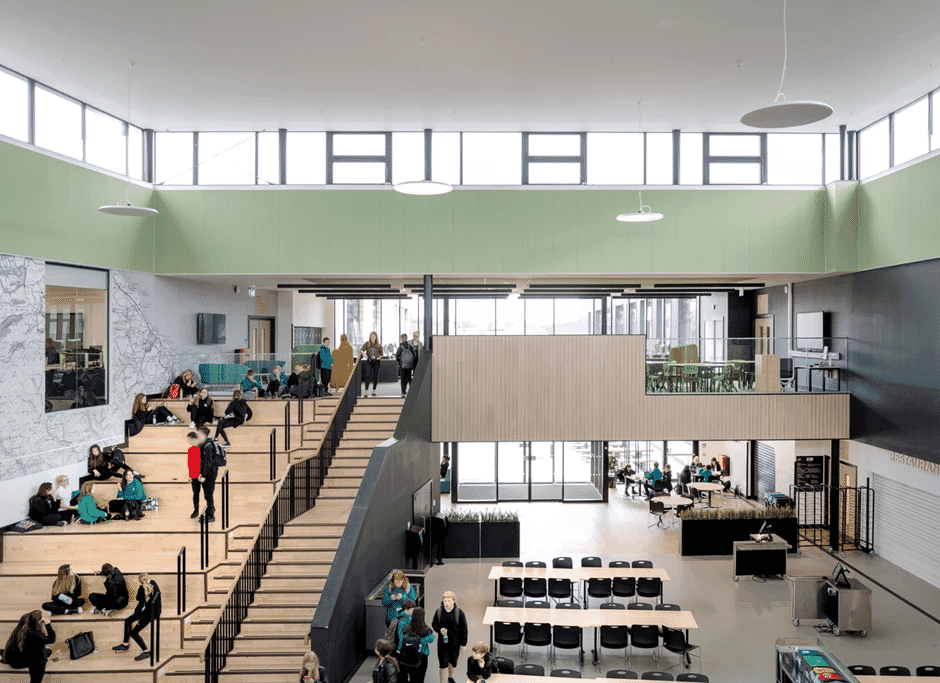
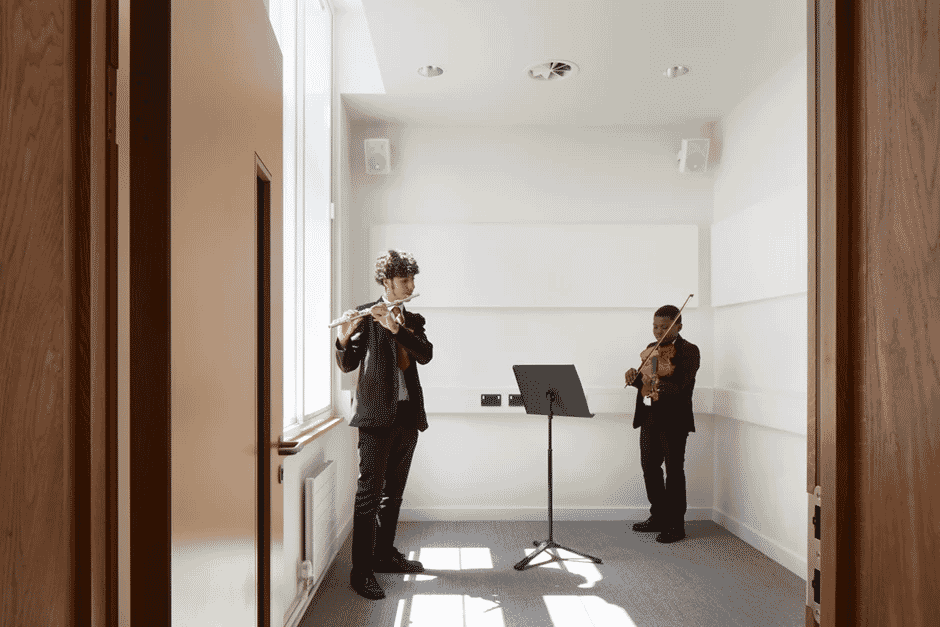
Reading Between the Lines
While these updates are relatively minor, they reflect a more realistic and flexible framework for schools to meet acoustic standards. The importance of considering acoustics at the design stage cannot be overstated—it remains the most effective and cost-efficient way to ensure learning environments support both teachers and students.
At Resonics, we work closely with schools, architects, and contractors to deliver tailored acoustic solutions that meet or exceed BB93 standards—creating spaces where learning can truly thrive. Contact Resonics today for a tailored assessment and discover how better acoustics can transform your school.